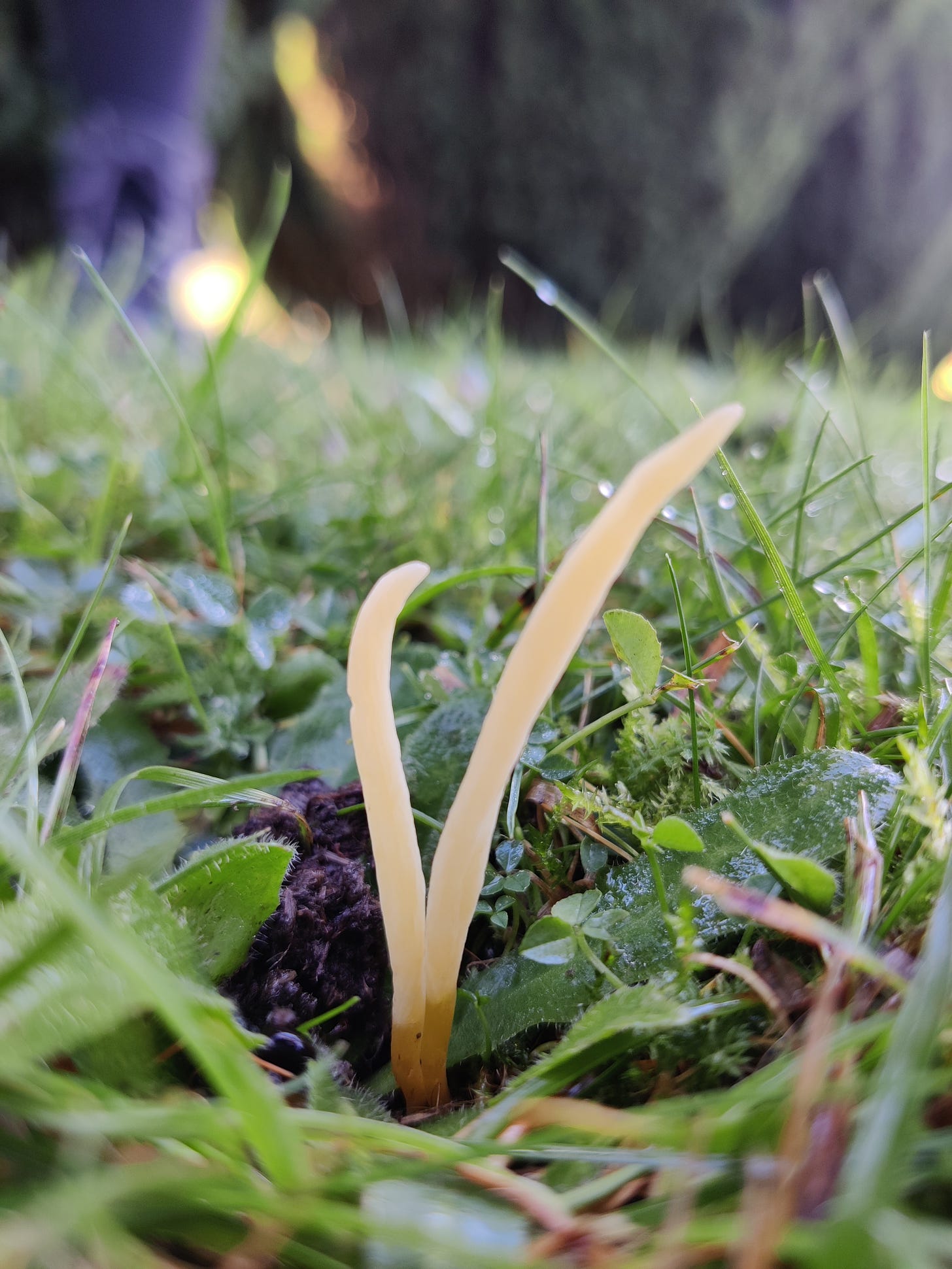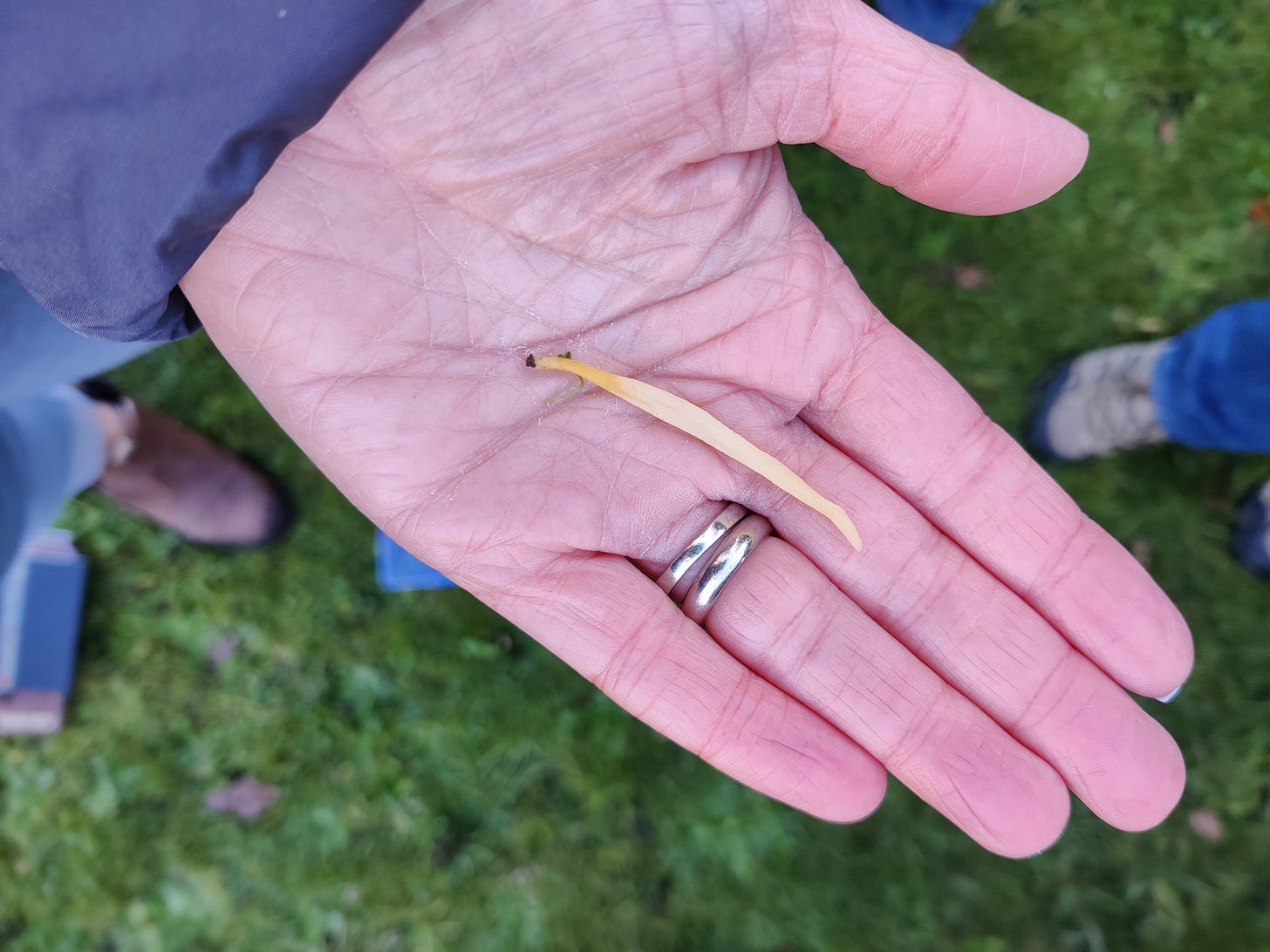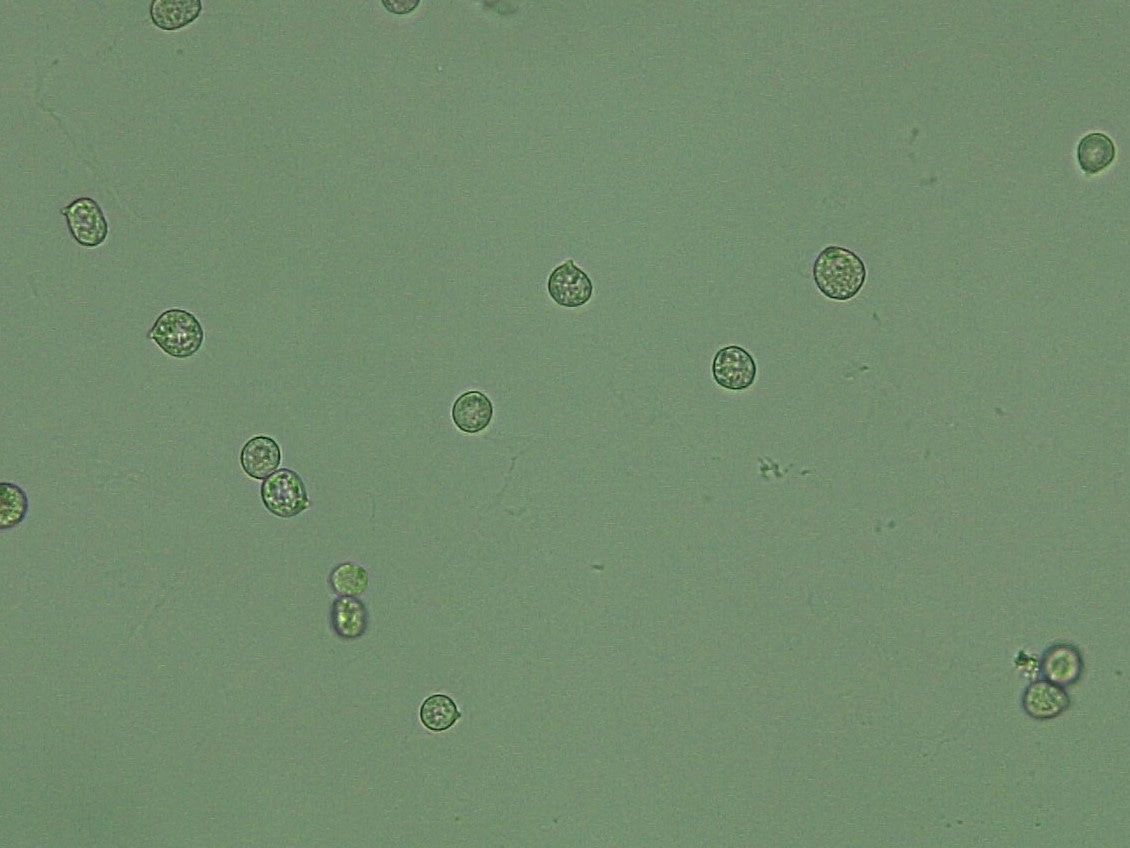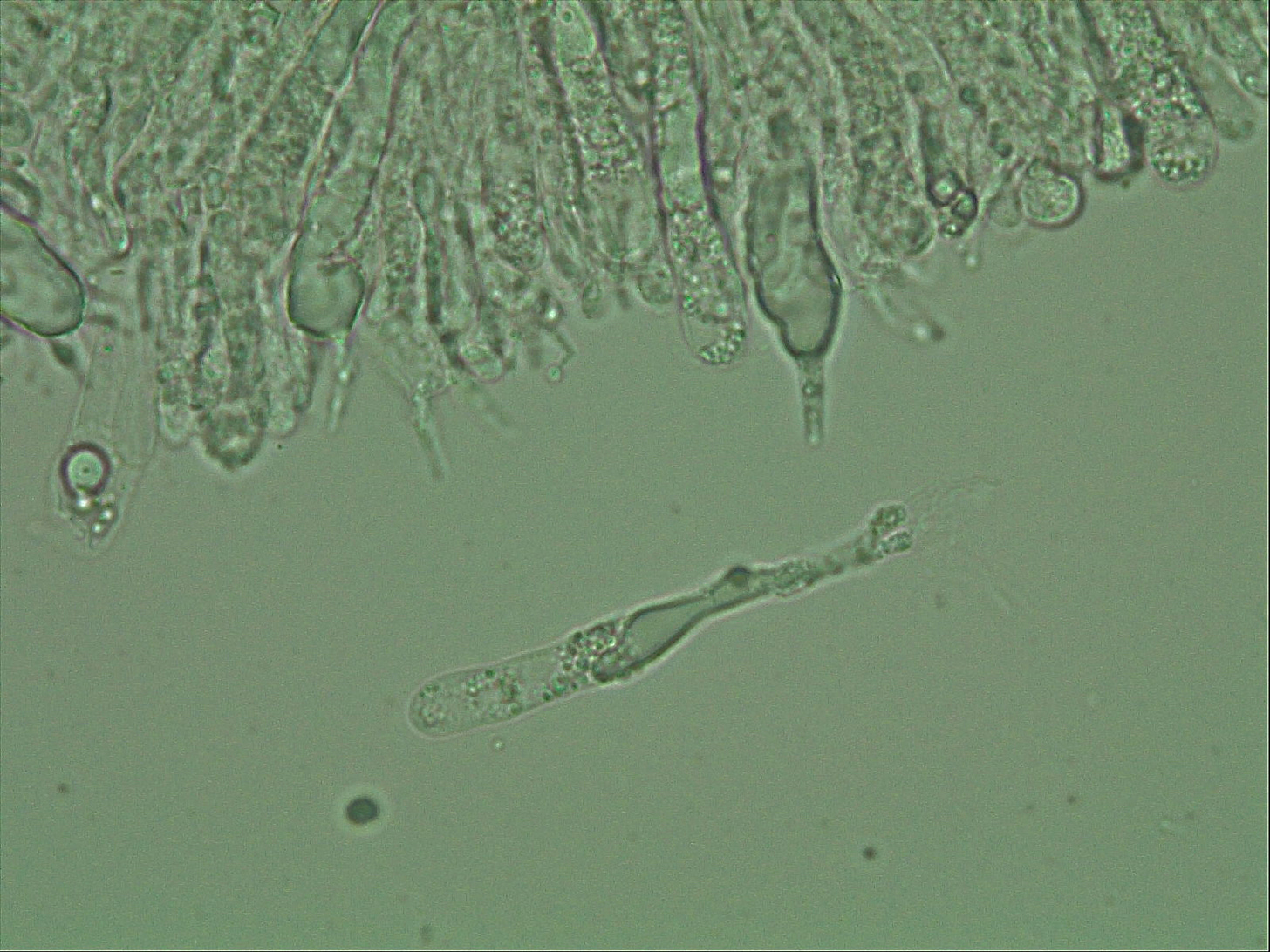
This post is part of an ongoing series. You can read the introductory post here.
If you’re wondering why the species featured in this series are appearing in a totally random order and the photos that accompany each piece aren’t very good, or even in focus, necessarily … it’s because these posts are coming to you LIVE! Live from the grasslands of Sussex, UK.
I was thrilled to encounter this clavarioid species on a lunch-break pop-in to my local churchyard. Kudos to my workmates, Bob & Lois, for spotting this one.
Look how yellow that stipe is!
Clavaria flavipes (= C. straminea) ~ Straw Club
ID difficulty rating: ⭐⭐
According to Franchi & Marchetti in I FUNGHI CLAVARIOIDI in Italia (2021), Clavaria flavipes can be recognised by its medium-sized, yellow-coloured clubs with stems of a brighter and more saturated yellow; and smooth, globose spores.
Bingo! I finally got some spores off of my collection after leaving it lying on a coverslip overnight. They look a bit golf-ball-y to me (not sure what the technical term for a minutely dimpled surface would be?) so it’s perhaps a bit of a stretch to call them “smooth”, but they don’t look like they’ve got warts or protuberances like some other club fungi.
I did also get a snap of what-I-think-is one of the “hoop-like clamp connections” at the base of the basidia. I saw a few of these in the squash but I found it difficult to get a good image.
I’ve given this species a ‘⭐⭐’ rating because I think you probably could identify it in the field with some certainty, if you know your clavarioids. But confirmation of those ‘globose spores’ under the microscope would add confidence.
In the UK people may know this species under the name Clavaria straminea, but more recent authors have relegated that name to being a synonym of C. flavipes.






